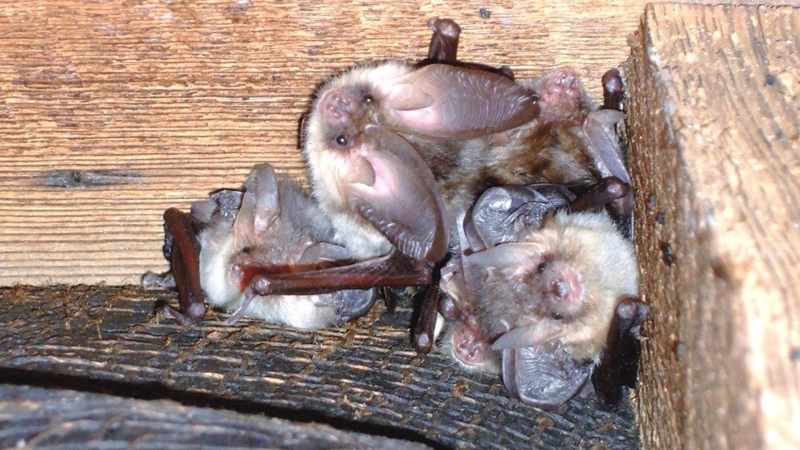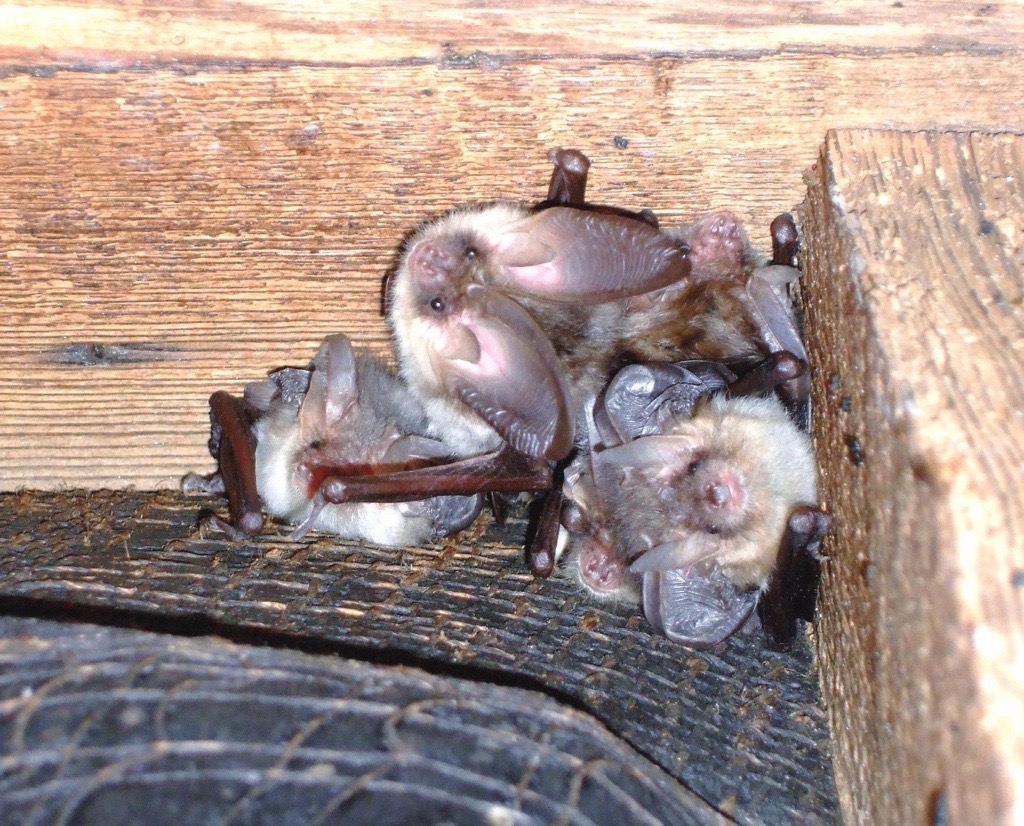We're supporting bats living alongside the A303
Published
08 Dec 2022

Share this article
Bat boxes, 300m of dead hedging and supplementary feeding and planting are among the innovative measures we're taking to help support a population of nine species of bats that have made their home in Somerset.
Bats are fascinating animals – the only true flying mammal. There are 18 species of bats in the UK, accounting for more than a quarter of mammal species in the UK and around 20% of all mammal species worldwide.
Weighing not much more than 2lbs on average, bats are often found in caves, rock crevices, or under bridges and we're going the extra mile to help preserve the species that have made their home along the A303 between Sparkford and Ilchester.
Species being supported include the Barbastelle, an incredibly rare bat that lives in deciduous woodland. They’re 4-5cm long and have a wingspan of around 26cm. In the UK, they are protected under the Wildlife and Countryside Act, 1981, and are listed as near threatened on the global IUCN Red List of Threatened Species.
One of the measures we're implementing is the installation of 220 bat boxes in suitable habitats across the scheme. Although not obvious to passing motorists, these boxes provide vital homes for bats. There will also be 300m of dead hedging - woody cuttings woven between vertical stakes that provide a tangled maze and a perfect hideaway for bats.
Along with the planting of trees, hedges, woodland, grasslands and wetlands to improve sustainability, environmental specialists also undertook observation and climbing checks on the bats and birds in the area and installed cameras for bat activity.
Elliot Hayes, Senior Project Manager on the A303 Sparkford scheme, said: “People might not give much thought to the wildlife that makes its home alongside routes like the A303 while on their journeys, but often they can be oases for wildlife."
“When situated alongside linear infrastructure, such as A-roads, habitats can create crucial corridors for pollinating insects, birds and small mammals, enabling wildlife to permeate the wider landscape."
“It’s vitally important that we protect the surrounding countryside and wildlife that makes it home there when we build these transformative schemes - not only for this generation but for the many generations to come to enjoy."
Nicola Sugden, Environmental Manager for contractor Galliford Try, added: “It is important to preserve, protect and enhance the habitat of the animals within our site and our surroundings."
“Bats will feed within the area around their roosts, which can be up to 10km. It is therefore important that we provide hedgerow protection throughout our site as the bats fly between their roosts and feeding grounds."

(Bats, such as the Brown long-eared bat (pictured), are being supported thanks to the installation of 220 bat boxes in suitable habitats across the scheme)
To ensure the bat population in the area were properly supported and evaluated, we sought the services of chartered ecologists, with specialities in the field of their particular survey. Along with identifying the various bats, they also implemented a biodiversity mitigation plan that would see the scheme have a positive contribution towards local bat and bird populations, including suitable habitats adjacent to the scheme.
Of the 18 species of bats in the UK, we found nine on the A303 Sparkford to Ilchester scheme:
- Barbastelle – these are incredibly rare and live in deciduous woodland. They’re 4-5cm long and have a wingspan of around 26cm.
- Brown long-eared – known as the whispering bat, this species is an expert inspect hunter thanks to its huge ears. These bats are around 8cm long and have a wingspan of around 30cm.
- Common pipistrelle – known to roost in buildings, these small bats weigh no more than a pound coin, with a wingspan of 20cm.
- Leisler’s bat – Another rare bat for England, this species is more common in Ireland. They used to be known as the ‘hairy armed bat’, are around 5-7cm in length and have a wingspan of around 30cm.
- Lesser horseshoe – one of the smallest bats in the UK (about the size of a plum with its wings tucked in) that hibernates underground in caves and tunnels. They’re no more than 4.5cm long and have a wingspan of around 25cm.
- Myotis sp. - There are 7 within the Myotis (mouse-eared) genus in the UK, but they are difficult to separate using sound recordings.
- Noctule – This species is the largest bat in the UK. They tend to live in tree hollows and have a wingspan of up to 40cm.
- Serotine – Another large species of bat for the UK, this species loves nothing more than munching on dung beetles. These bats are between 5 and 8cm long, with a wingspan of around 37cm.
- Soprano pipistrelle – A common bat in the UK that can often be seen in your garden. It’s hard to differentiate from its cousin, the Common pipistrelle – they’re almost identical but the Soprano is slightly smaller.
Along with the bat boxes, the scheme also installed 35 bird boxes, 190 dormouse boxes and two hibernacula where small animals can seek shelter.
The scheme will install an animal crossing under the A303 for badgers and other animals, and will reinstate wildlife ponds. Biodiversity enhancement work also includes planting trees, hedges, woodland, grassland and wetlands.
While all planting will take time to establish, new habitats are long-term provisions for the area, with National Highways managing them moving forward, including monitoring dormouse numbers for six years after the scheme is completed.
Visit the A303 Sparkford to Ilchester webpage for more information on the scheme.
